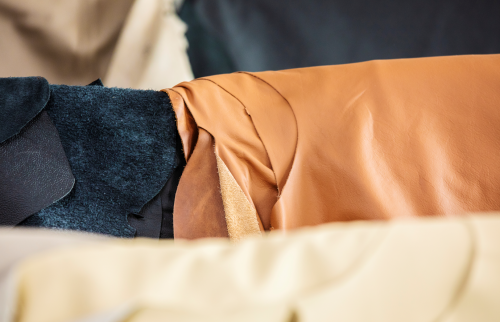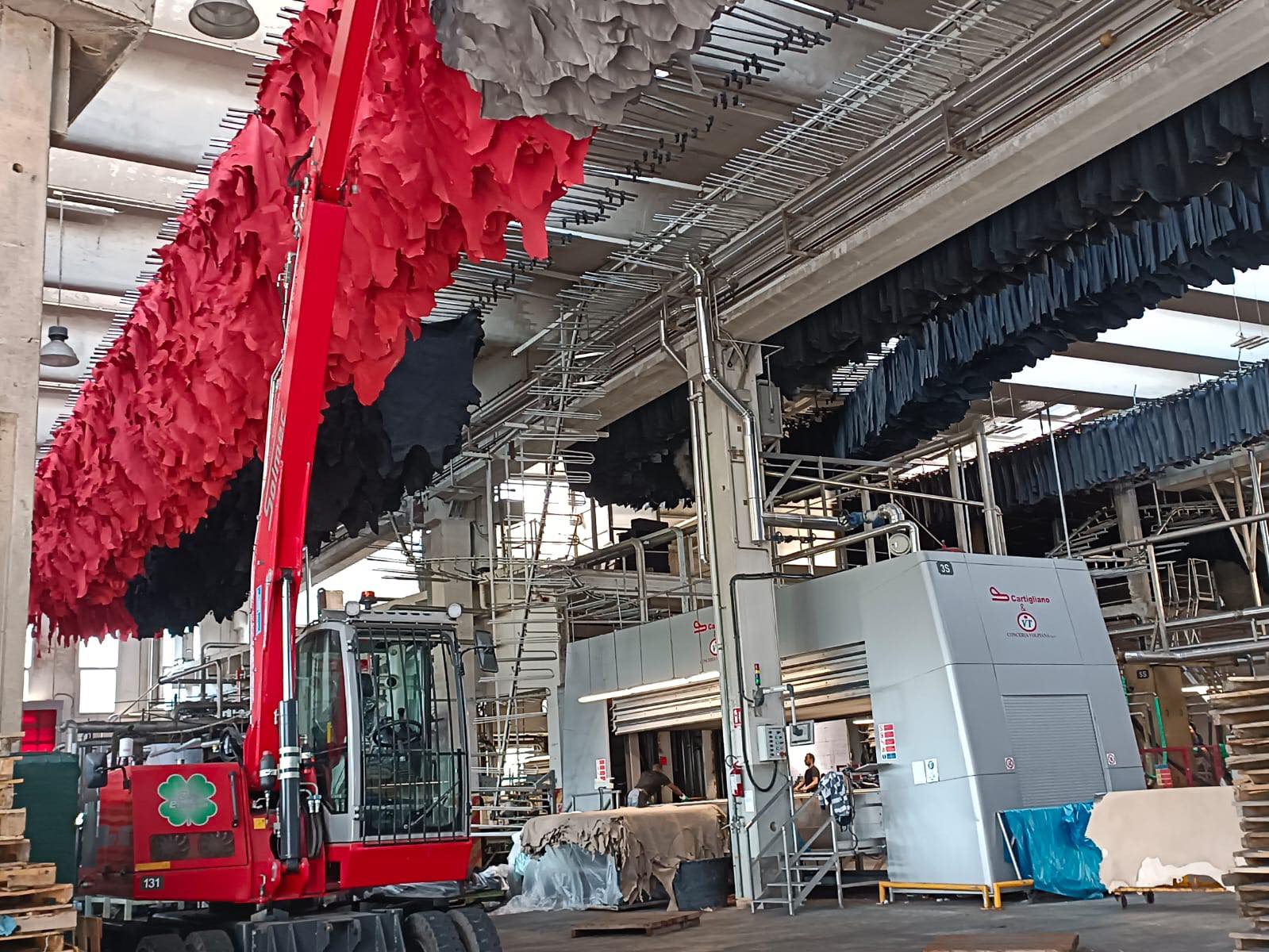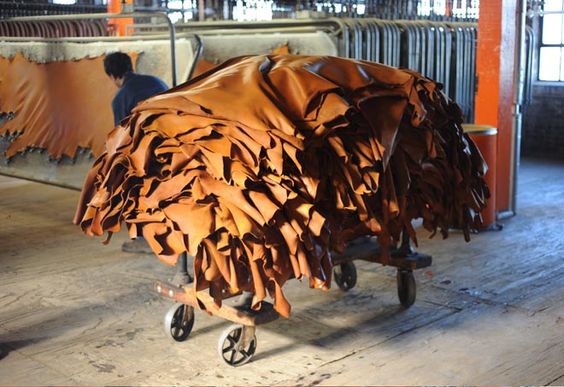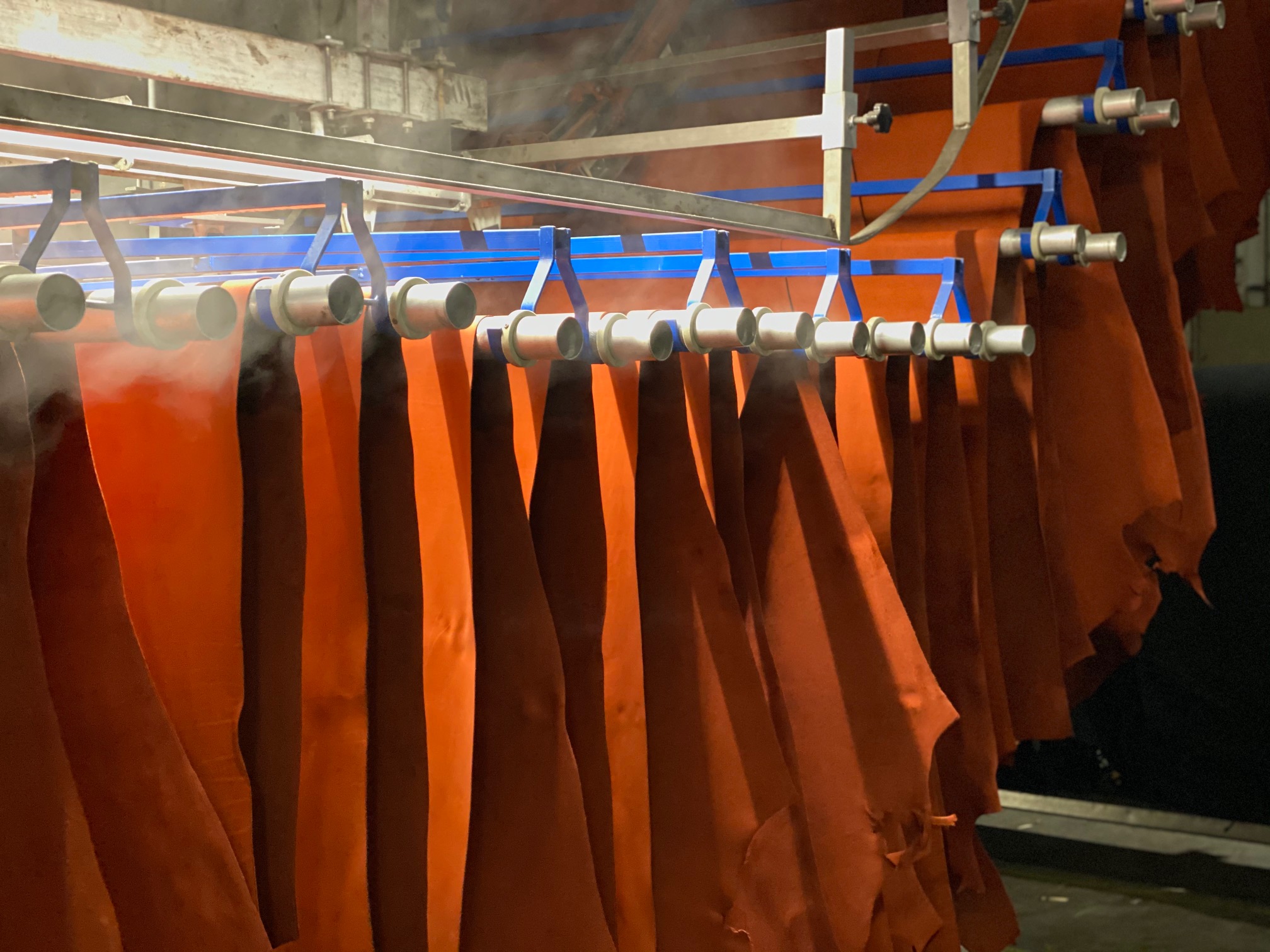How do we tan and produce leather?

History
Natural hides were probably processed already in the times of nomadic and hunting peoples. The process of treating, processing and tanning leather evolved from smoking in smoke and removing the hair with lime, to the invention of tanning plants, which in turn gave rise to a very important part of the leather industry - vegetable tanning. Leather tanning with plants lasted until the end of the 19th century. Only after the invention of chromium salt by the German F. Knapp in 1858, it allowed to significantly simplify and shorten the leather tanning process and showed an alternative to vegetable tanning.
Following the Historical Almanac, according to the opinion of today's specialists, among the trees and plants found in Poland, the most tannins are: oaks, spruces, birches, various varieties of willow, and among plants, sumac and sea wax. In the opinion of the 16th century tanners, the leather tanned with spruce bark became soft, spongy and quickly soaked up with water. Leather tanned with willow bark, or rather its wicker variety, apart from softness and elasticity, obtained a nice, bright color. The red color in different varieties was given by the spruce and birch bark. The greenish color of the morocco shoes in Opole (Poland) was obtained from a plant called sumac, harvested for tanning purposes in June.
How is the tanning process?
Skins prepared for tanning are subjected to baths in solutions of chemical compounds. In order to get rid of excess solutions and prepare them for the next stages, they are centrifuged in a special centrifuge. The last bath takes place in tannins, thanks to which the raw material gains flexibility.
Then it is necessary to plan the skin by specialists, which is to obtain the appropriate thickness of the skin. Then we move on to dyeing in huge drums in a solution of mineral salts. The skins, after being treated in the drum, are wet, therefore the drying process begins. After drying, the skin is oiled, then stretched and pressed.


Leather production process
Tanning is one of the stages, very important and unmistakable. But how is leather produced?
Slaughterhouse
The skins are taken from animals (bulls, cows, buffaloes), packaged, salted and folded on pallets. Prepared in this way, they go to the tannery.
Tannery
First stage of treatment - pre-tanning:
- desalting the skins, i.e. shaking off the salt in a special rotating basket
- decalcifying, rebuilding, degreasing and de-hair removal in the drum - this way the leather is pre-tanned and prepared for proper tanning.
Proper tanning:
-chromium or vegetable tanning (i.e. with chemical or natural tanning agents)
-at this stage, the skin is naturally white, i.e. white. It is smooth and full thickness, it also consists of the upper layer, i.e. the face, and the lower layers, i.e. splits.
Next stages, following stages:
- skin splitting (splitting / spaccatura). This process separates the face from the split
- evening the thickness (shaving / sasatura) to a certain level depending on the needs
- secondary tanning - otherwise dyeing through the drum for a given color (retanning / riconcia / tintura). As a result, the skin acquires the desired color.
-drying - after ricconci (staining) the skin must be dried. Traditional drying takes place in an oven (telaio - the skin is stretched over a special frame / lattice) or by vacuum (quick suction of water and moisture from a piece of leather). Vacuum drying is usually accompanied by additional and finally drying in the open air (the skins are hung on special hangers - catene, which for several hours get rid of moisture, moving slowly in the air).
-after drying, the skin turned into the so-called CRUST
Types of CRUST:
- sanded (smerigliato) and masked with a special emulsion (stuccato) to correct defects, unevenness and errors (used in low-selection skins, those economical)
- sanded gently on nubuck to raise the bristle and nubuck effect in products from the nubuck group
- foul only in the drum without correction - usually leather of the highest selection, high quality - the so-called full of aniline
Leather finish
-after correction of the crust, the leather finishing phase takes place - pigment staining, embossing or grinding in the drum to bring out the natural structure (grana naturale)
- leather finished in this way is again bottalatura, pressed (stiratura), measured and packed in pallets on trestles or rolled into rolls.


